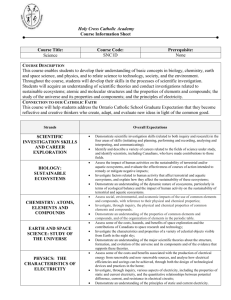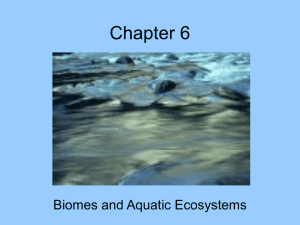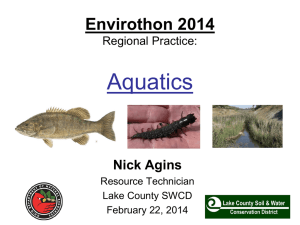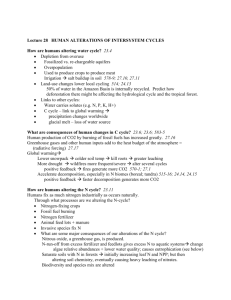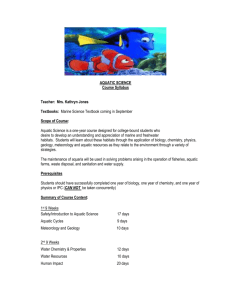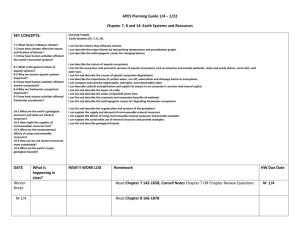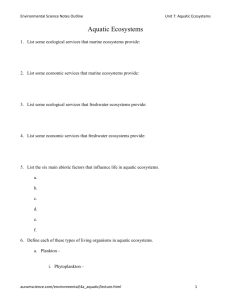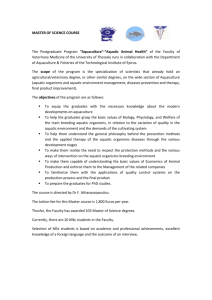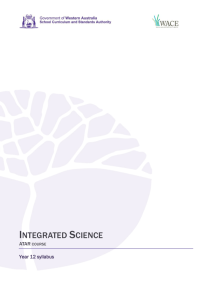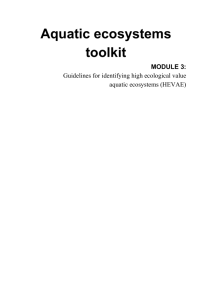Word Format - WACE 2015 2016
advertisement
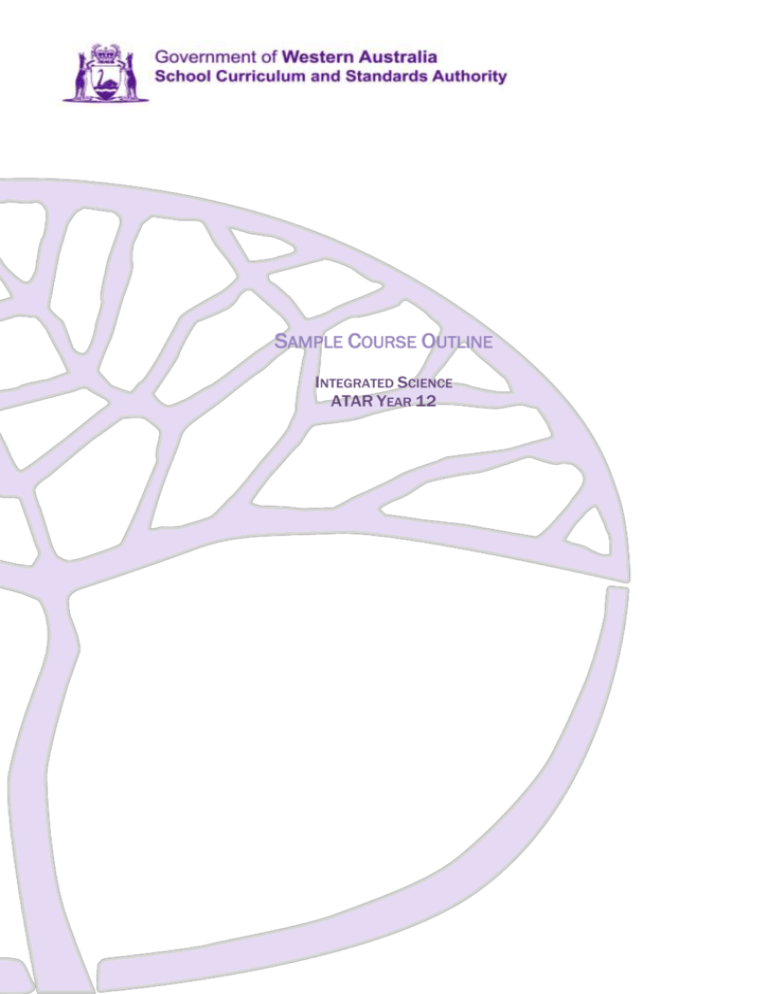
SAMPLE COURSE OUTLINE INTEGRATED SCIENCE ATAR YEAR 12 Copyright © School Curriculum and Standards Authority, 2015 This document – apart from any third party copyright material contained in it – may be freely copied, or communicated on an intranet, for non-commercial purposes in educational institutions, provided that the School Curriculum and Standards Authority is acknowledged as the copyright owner, and that the Authority’s moral rights are not infringed. Copying or communication for any other purpose can be done only within the terms of the Copyright Act 1968 or with prior written permission of the School Curriculum and Standards Authority. Copying or communication of any third party copyright material can be done only within the terms of the Copyright Act 1968 or with permission of the copyright owners. Any content in this document that has been derived from the Australian Curriculum may be used under the terms of the Creative Commons Attribution-NonCommercial 3.0 Australia licence Disclaimer Any resources such as texts, websites and so on that may be referred to in this document are provided as examples of resources that teachers can use to support their learning programs. Their inclusion does not imply that they are mandatory or that they are the only resources relevant to the course. 2014/51036v4 1 Sample course outline Integrated Science – ATAR Year 12 Unit 3 and Unit 4 Unit 3 – Water Week 1 Key teaching points Importance of water water cycle role of the different states of water in regulating climate 2–3 Properties of water molecular structure and surface tension polarity density specific heat, including calculations (Ε=mcΔT) buoyancy solubility of salts, nutrients and gases Task 1: Science inquiry (practical) – Testing properties of water 4–5 Aquatic ecosystems the effects of salt concentration, phosphate, nitrate, dissolved oxygen, turbidity, pH and temperature on aquatic life gas exchange in aquatic animals osmoregulation in salt and freshwater fish cycling of matter in aquatic ecosystems (food webs, biomass and energy pyramids) human use of aquatic ecosystems Task 2: Test – Properties of water and aquatic ecosystems 6–7 water monitoring, using physical and biological monitoring techniques (macro-invertebrate sampling) impact of human activities on public drinking water Task 3: Science inquiry (investigation) – Comparison of local aquatic ecosystems 8–10 effect of biomagnification, eutrophication and oil spills on aquatic ecosystems Task 4: Extended response – Aquatic environmental issues 11–12 Water resources and sustainability potable water sources in Western Australia treatment of potable water availability and distribution of potable water water resources management – desalination plants and managed aquifer recharge Task 5: Extended response – Water treatment 13 water treatment of domestic waste water Task 6: Science inquiry (practical) – Treating water 14 water catchment management strategies to help prevent dryland salinity, eutrophication and erosion land use in catchment areas and preservation of natural waterways Task 7: Test – Water sources and sustainability 15 Task 8: Examination – Semester 1 Sample course outline | Integrated Science | ATAR Year 12 2 Unit 4 – Energy Week Key teaching points 1–2 Energy forms of energy potential: gravitational, chemical, elastic and nuclear kinetic: mechanical, sound, heat, electrical light energy work the law of conservation of energy Transportation internal combustion engine Task 9: Extended response – Internal combustion engine 3–5 Sources of energy the sun as the origin of energy for fossil fuels as non-renewable sources of energy wind, biomass, biofuels, hydropower and solar as renewable sources of energy geothermal and nuclear as alternate sources of energy Task 10: Test – Energy, transportation and sources of energy 6–7 Electricity electromagnet induction in generators electrochemical batteries and photovoltaic effect Task 11: Science inquiry (investigation) – Factors affecting electricity generation 8–9 fossil fuel power plants environmental impacts of fossil fuel electricity generation (resource extraction, land clearing, emissions, waste disposal consumption and pollution of water) nuclear power plants effects of radiation on the human body protective measures used to safeguard against exposure to radioactive substances disposal of radioactive material advantages and disadvantages of various methods of electricity production energy transformations in the home Task 12: Test – Electricity 10 Heating transfer of heat energy by conduction, convection, radiation and evaporation Task 13: Science inquiry (practical) – Heat transfer 11 12–13 space heating in the home by fossil fuels and passive solar design Environmental and societal issues methods of increasing resource lifetimes – shale gas from hydraulic fracturing (fracking) domestic energy efficiency and consumption energy efficiency calculations power power calculations alternative fuels and the reduction of environmental impact international agreements to reduce greenhouse emissions and the need to find new technologies renewable energy resources are informed by environmental, economic and political considerations advantages and disadvantages of various methods of electricity production Task 14: Test – Heating and environmental and societal issues 14 Examination revision 15 Task 15: Examination – Semester 2 Sample course outline | Integrated Science | ATAR Year 12

